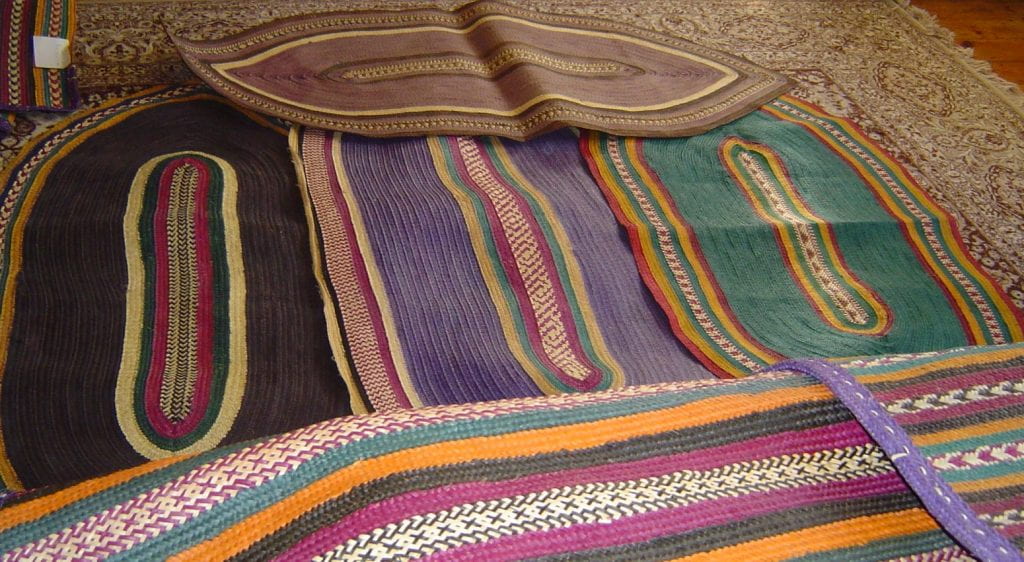Mafia is famous for its mats which are exported all over East Africa. They are of two kinds: large, coarse mats known as majamvi are usually made by men, as are the round mats (vitangaja) used for drying rice in the sun. A similar weave is used for baskets.

Mats for sleeping and sitting on (mikeka) are made by women. The fronds of the raffia palm are cut and dried, then each one is slit. The ensuing thread is plaited into strips, dyed, and then sewn together, and finally given a border. Some strips (known as kazi or ‘work’) are patterned and here the thread is dyed before being plaited. The quality of a mat is judged by the amount of patterning, its size, and its evenness of shape. Women also make oval prayer mats (misala), which always contain a centrepiece and a border with patterning. Such mats hang on the wall when not in use.
The raffia palm grows in the bush outside the villages. Its fronds (ukindu) are first cut and then placed to dry in the sun. After this, each frond is split and then plaited into strips (ukili) which are dyed. Women plait raffia on every conceivable occasion, and it is not unusual to see a woman walking along with her raffia basket in her head, her hands busy plaiting. Finally the strips are sewn together to make a mat or prayer-mat, with a border being sewn around the former. A woman can make perhaps half a dozen mats a year and uses the cash to buy clothes for herself and her children.
Women earn most of their cash from the sale of mats. In 2004, a good ordinary mat would fetch around T. Sh. 2,000 (U$2.0) and a prayer mat about half of that from one of the traders in the village, who would sell it for at least double that amount in Dar es Salaam. Women can make between 6 and 10 mats each year and use the money to buy clothes for themselves and their children. Women also make mats for their own household use or as gifts, in which case they tend to be larger and finer.
The mats shown here are in the collection of Pat Caplan and most were given as gifts on visits to Kanga village, Mafia, usually at the time of leaving. A few date from the 1960s and have become somewhat faded, others are as recent as 2002 and 2004.

